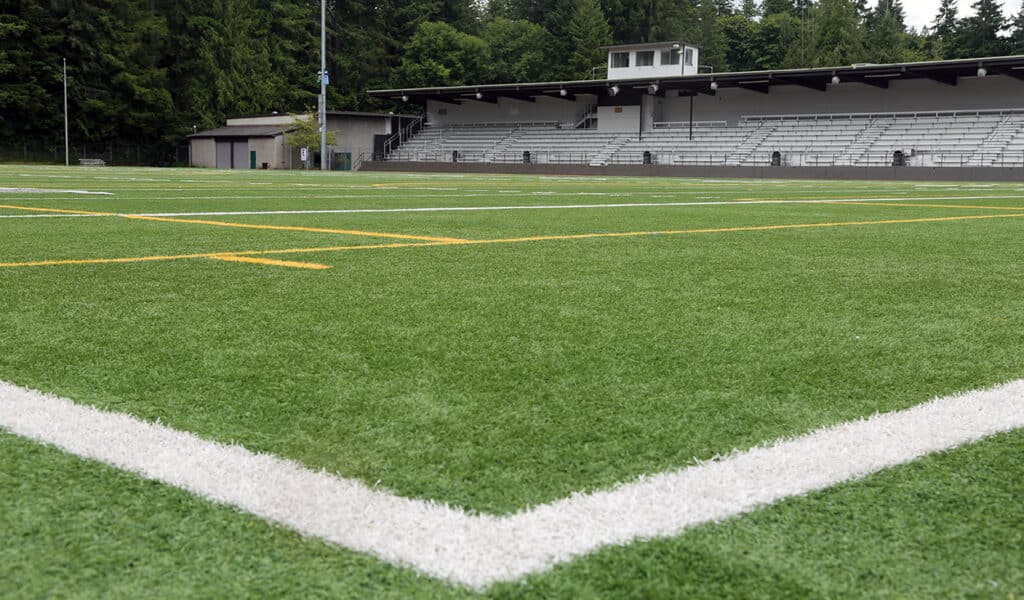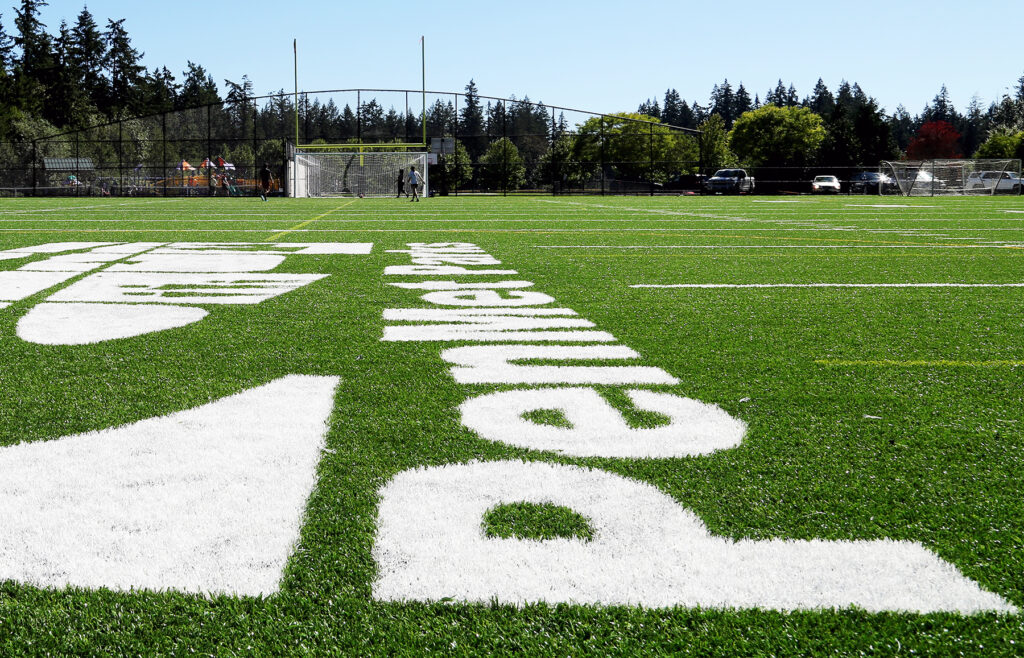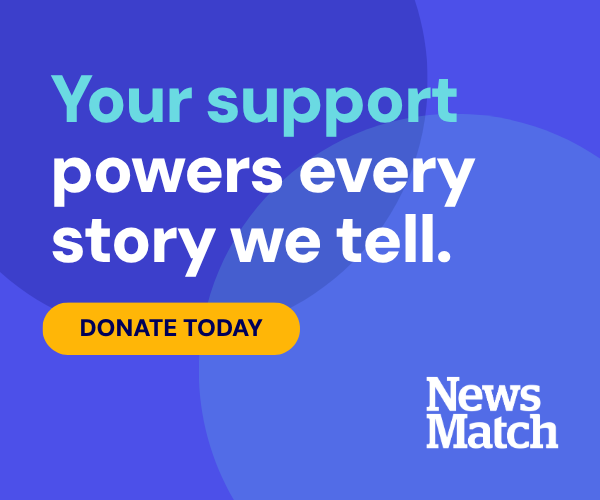Community Education Environment Health & Wellness
State program examines alternatives to problematic chemicals in artificial turf, other products
For the thousands of children who play sports in the Gig Harbor area, there often aren’t enough fields to go around. That is one of the reasons city officials rejoiced at the groundbreaking for two new turf athletic fields outside the Tom Taylor Family YMCA in May.
Health & Wellness Sponsor
Health and Wellness stories are made possible in part by Virginia Mason Franciscan Health, a proud sponsor of Gig Harbor Now.
“Kids need more outdoor spaces where they can play sports and stay physically active,” Charlie Davis, CEO of the YMCA of Pierce and Kitsap Counties, said at the ceremony for the Gig Harbor Sports Complex.
In perpetually rainy Western Washington, artificial turf fields have taken off in popularity as an all-weather, easy-to-maintain alternative to natural grass. But as installation has boomed, so too have concerns about exposure to toxic chemicals.
A program of the state Department of Ecology aims to ensure removal of problematic chemicals from artificial turf. Last month, the Department of Ecology listed artificial turf as one of nine priority products it plans to review through the second iteration of its Safer Products for Washington Program.
The program, created in 2019 and hailed by some as one of that nation’s strongest laws regulating toxic chemicals, directs Ecology and the state Department of Health to find ways they can reduce exposure to toxic chemicals in humans and the environment.

The turf field at Roy Anderson Field in Gig Harbor on Friday, June 27, 2025. Photo by Vince Dice
Alongside turf, it will look at alternatives for adhesives, cosmetics, jewelry, nail products and plastic packaging. They will research ways those products could be made safer through regulation or outright ban.
Can turf be safer?
Marissa Smith, a senior regulatory toxicologist for the Washington Department of Ecology, said researchers have probed the safety of artificial turf for a long time. Ecology’s role is not to determine if turf is a health risk, but whether it can be manufactured without hazardous chemicals.
“We are focused on reducing exposure in the first place,” Smith said.
People and the environment can be exposed to harmful substances known as PFAS and 6PDD during the manufacturing, use and disposal of synthetic turf. Manufacturing turf and other products without them would present an opportunity to reduce chemical exposure, Ecology wrote in a report submitted to the Legislature.
PFAS, known more commonly as forever chemicals, are a broad class of thousands of chemicals that do not degrade easily in the environment. They are widely used in products like clothes, packaging and cosmetics.
PFAS can be found in several components of artificial turf, including its grass blades and backing. These chemicals are associated with a range of adverse health outcomes, including some cancers.
6PPD is used most often to prevent car tires from degrading. When it reacts with ozone in the air, it forms 6PDD-quinone. The toxic chemical has received significant attention since 2020, after a group of scientists determined it was primarily responsible for killing coho salmon in urban water streams and rivers.
Recycled tire scraps, known as crumb rubber, are a common infill in turf. They comprise the black bits placed between the faux grass. Researchers say chemicals in crumb rubber can cause cancer.
State law allows Ecology to regulate turf and other products if a “feasible alternative” is available on the market, Smith said. Over the next year, the department will review possible alternatives before producing a report in 2026.

PenMet Parks installed new turf on the multi-use field at Sehmel Park in 2022. Vince Dice
Health risks
Ev Rasyid, a toxicologist with the Department of Health, wrote in an email that the agency continues to monitor research and recommends those participating in sports continue to use artificial fields.
Parents should be aware that there are chemicals in crumb rubber that cause cancer, she said. But research suggests exposure is low and will not cause cancer in frequent users. Studies conducted in multiple states have found no significant health risk to chemicals for adults or children playing on artificial turf, she said.
“There is no new evidence to suggest changes be made to these previous findings,” she said. “However, chemicals present in some turf fields (e.g., metals, VOCs, PFAS, 6PPD, etc.) can be toxic in some other human exposure situations or are toxic to the environment.”
The state Department of Health released a study in 2017 that found artificial turf containing crumb rubber did not appear to cause cancer. That report, though, was widely panned by epidemiologists and toxicologists as being based on faulty logic, according to reporting by Seattle NPR affiliate KUOW.
Rachel Massey, a senior research associate at the University of Massachusetts-Lowell Center for Sustainable Production, was one of those who criticized the state’s research. In an interview, she said no well-designed epidemiological studies have determined whether playing on artificial turf increases risk of cancer or other adverse health effects.
Exposure and risk
Scientists know chemicals in tire crumb rubber and PFAS can cause adverse health effects. The question that remains is if prolonged time on artificial turf increases that risk, and to what extent.
“The only debate is about how much kids are exposed to and then what the consequences may be of that exposure,” she said. “There may also be some disagreement over how much risk is considered to be acceptable, which is a question about values as opposed to a scientific question.”
Alternative rubber and plastic infills are available for artificial turf fields. Their health effects have largely gone unstudied, Massey said. Her research a few years ago found these products still contained chemicals of concern.
“Those alternative materials generally contained fewer chemicals of concern or lower concentration of chemicals of concern but we weren’t able to find any that were entirely free of concern,” she said.
Companies are also now marketing turf products claiming to be PFAS-free. That may be true in some cases, but that assertion can be misleading. Many detection tests for PFAS chemicals look at only a subset of that group. Products can also be labeled “PFAS-Free” if they fall below a certain concentration threshold.
On the peninsula
At least 25 turf fields are in use across the Kitsap Peninsula, according to school district spokespersons and online records. Representatives for the South Kitsap, Bremerton, and North Kitsap school districts all said their fields did not contain crumb rubber.
Danielle Chastaine, a spokesperson for the Peninsula School District, said the district had three turf fields, renovated between 2017 and 2020. She said PFAS and 6PPD were “not considered during these projects, as current testing protocols and warnings were not established when these decisions were made.”
A YMCA spokesperson said AstroTurf will be used on the new fields on Harbor Hill Drive. AstroTurf’s website indicates the company does not use PFAS or other forever chemicals in their products.
Representatives of PenMet Parks did not immediately return a request for comment.


